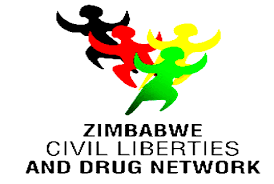By Byron Mutingwende
Jeremiah James (25) a holder of a degree in sociology from one of the reputable universities in South Africa is snoring, dead-drunk, his mouth wide open and oblivious of a swarm of flies circling around him as he takes a slumber on a hot day on the pavement in Harare’s Central Business District.
Jeremiah’s friends tell this reporter not to worry about him because he had just been intoxicated by one of the drugs sold on the streets – that have become popular among the youth, especially the unemployed.
“The streets of Harare are awash with drugs of all kinds: from marijuana or Mbanje to broncleer, Histalix, DPH, Coccaine, Cordain, musombodhiya,Tegu-tegu, katsotsi, soldier, zed, double punch, Heroin, Mangemba, maragado and a variety of sex-enhancing tablets,” said Hilton Nyamukapa, the Programme Coordinator of the Zimbabwe Civil Liberties and Drug Network (ZCLDN).
Nyamukapa said that Zimbabwe is currently having illicit drug use challenges especially amongst the youth(both male and female). He said that ZCLDN is a non-governmental organization, established to advocate for effective strategies for addressing problems associated with drug use in Zimbabwe. Its mission is to spearhead evidence- based drug policies that are responsive to Public Health and Human Rights. ZCLDN seeks to engage the civil society organisations and media on Drug Laws, Human Rights and Harm Reduction strategies for drug users, influence perceptions on drugs, promote public health and safety and raise awareness on how issues of drug use within the community are impacting the fight for an HIV and TB free future.
Drugs are chemical substances that affect both the mind and the body. The prolonged use of drugs may lead to physical and/or psychological dependence. An overdose of any drug may lead to hallucinations, organ failure and death.
Jeremiah is among many youth who have fallen victim to substance and drug abuse. The current statistics on illicit drug misuse is shocking.
It is estimated that 60% of the youth are on illicit drugs Zimbabwe. The Vocie of America (VOA) Africa, in 2015 estimated the unofficial number of addicts in Zimbabwe to be between a million and 1.2 million countrywide. The Zimbabwean newspaper on 2 July 2014 said that the police were recording more than 100 cases of drug abuse every month in Harare alone while statistics from the Anti- Drug Abuse Association of Zimbabwe (ADAAZ) says up to 43 per cent of students know of schoolmates found in possession of cigarettes. The Herald, on August 14 2014 reported that 65% Zimbabwe youths suffer drug-induced mental problems. Chitungwiza Central Hospital reported in 2016 that 60% of its mental patients are youths between 15 and 24 years old. Seven school girls in Manicaland from Dangavhura and St Joseph’s High School were arrested in 2016 for smoking mbanje.
Sofia Mapuranga, the ZCLDN Media Officer said that Zimbabwe currently does not have a drug policy but drug misuse was dealt with under the Criminal Law Codification Act and the Dangerous Drug Act. She said efforts towards mainstreaming harm reduction (a set of practical strategies and ideas aimed at reducing negative consequences associated with drug use or movement for social justice built on a belief in, and respect for, the rights of people who use drugs).
“The ZCLDN notes that social inequality affects persons from different groups in different ways. We however place emphasis on the importance of ensuring that even those with drug addictions have their rights honoured, including the right to health care. Health care professionals and the media can play a vital role in the prevention of drug misuse, care of persons with addiction and in bringing the desired policy changes that promote harm reduction.
“When persons with addiction are approached by providers with disdain and rejection – no matter how subtly, they may reject the care offered by these providers. In fact, negative behaviours such as these may result in a missed opportunity for the addicted person to learn about important treatments,” Mapuranga said.
There are number of reasons that are leading to an increase in the uptake of drugs among the youths. Nyamukapa cited peer pressure, rigorous training and stress from high unemployment or broken families, emotional and physical abuse as some of the common drivers of drug abuse.
There were calls to engage policymakers and Parliamentarians to come up with a national drug policy. Media practitioners were urged to employ investigative journalism techniques to expose the value supply chain of drugs from manufacturers, to smugglers, law enforcers and consumers. Civil society organisations were encouraged to ensure that their research and documentation on drug abuse was evidence-based and to hold consultative dialogue meetings with the women, religious leaders and legislators as well as to increase their advocacy against drug abuse.






